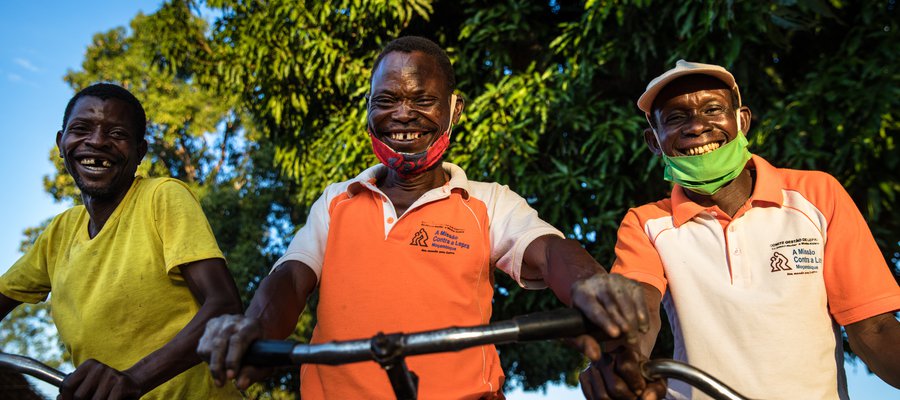
World Leprosy Day is an annual event aimed at raising awareness and combating the stigma surrounding leprosy. Leprosy, also known as Hansen’s disease, is a chronic infectious disease caused by Mycobacterium leprae.
It primarily affects the skin, eyes, and nerves, leading to visible deformities and nerve damage that can result in loss of sensation and paralysis. Despite being curable and free treatment being available, leprosy remains a significant health concern in many parts of the world.
World Leprosy Day, observed on the last Sunday of January, is an opportunity to educate people about leprosy, challenge the social stigma associated with the disease, and support those affected by it. The day is marked by various events and activities organized by governments, non-governmental organizations, and individuals, all aimed at promoting early diagnosis, access to treatment, and inclusion for those affected by leprosy. Together, through awareness and action, we can work towards a world free from the physical and social burdens of leprosy.
The History And Significance Of World Leprosy Day
The History and Significance of World Leprosy Day
| Origins and Evolution of World Leprosy Day | The Importance of Raising Awareness about Leprosy |
| Leprosy, also known as Hansen’s disease, has plagued humanity for centuries. In 1954, Raoul Follereau, a French writer and philanthropist, established World Leprosy Day to raise awareness, fight stigma, and support those affected by the disease. Over the years, this annual observance has become a global platform to educate communities, promote early detection, and provide assistance to individuals suffering from leprosy. World Leprosy Day aims to highlight the social, economic, and psychological impact of leprosy on individuals and their families. It calls for collective action to ensure access to treatment, rehabilitation, and integration of leprosy patients into society. By raising awareness, this day challenges misconceptions, dispels myths, and fosters empathy and inclusivity. Through initiatives, campaigns, and events organized worldwide, World Leprosy Day emphasizes the need for early diagnosis and appropriate medical interventions to prevent disability caused by delayed treatment. It addresses the urgent need for research, resources, and investment in healthcare infrastructure to eradicate leprosy globally. |
World Leprosy Day serves as a reminder that leprosy, though curable, continues to affect millions of people worldwide. By shedding light on this neglected disease, the day encourages governments, healthcare professionals, and communities to prioritize leprosy control and eradication efforts. It highlights the importance of public health interventions, like contact tracing, in reducing transmission and preventing disability. Raising awareness about leprosy also helps combat the deeply ingrained social stigma associated with the disease. By dispelling myths and fostering understanding, society can create an environment where people affected by leprosy are treated with dignity, respect, and acceptance. Through education and advocacy, we can dismantle barriers, promote access to healthcare, and improve the quality of life for individuals affected by leprosy. World Leprosy Day presents an opportunity for individuals, organizations, and governments to unite in the fight against leprosy. It reinforces the commitment to eliminating this ancient disease and ensuring that those affected receive the care and support they deserve. |
The Global Burden Of Leprosy
The global burden of leprosy is a significant health concern that continues to impact communities worldwide. Epidemiology and current statistics highlight the prevalence and challenges associated with this disease.
Leprosy is found in various geographic regions, with certain areas serving as hotspots for transmission. It has been reported in over 100 countries, with the majority of cases concentrated in India, Brazil, and Indonesia. These regions experience a higher burden due to factors such as poverty, inadequate healthcare infrastructure, and social stigma.
Accurate reporting and surveillance of leprosy cases pose challenges, as cases may often go unreported or misdiagnosed. Factors such as insufficient resources, lack of trained personnel, and cultural beliefs contribute to underreporting. Additionally, the disease’s long incubation period and non-specific symptoms further complicate accurate diagnosis and reporting.
| Geographical Distribution | Hotspots |
|---|---|
| Over 100 countries | India, Brazil, Indonesia |
Efforts to improve surveillance and reporting systems are vital in combatting leprosy. Increased awareness, early diagnosis, and accessible treatment can significantly reduce the burden and impact of this debilitating disease.
The Stigma Surrounding Leprosy
- One of the most prevalent myths about leprosy is that it is highly contagious. In reality, leprosy is a mildly infectious disease that cannot be easily transmitted and is not hereditary. It primarily spreads through droplets from the nose and mouth during close and prolonged contact.
- Historical and cultural perceptions have contributed to the stigma surrounding leprosy. Throughout history, leprosy has been seen as a curse or punishment, resulting in isolation and discrimination for those affected.
- The impact of leprosy on societal integration and mental health cannot be undermined. Individuals affected by leprosy often face alienation from their communities, workplace, and even family members due to deep-rooted fear and ignorance.
To combat the stigma surrounding leprosy, it is crucial to educate the public about the disease and dispel the myths and misconceptions associated with it. By spreading awareness and promoting inclusion, we can ensure that individuals affected by leprosy receive the support and understanding they deserve.
Promoting Early Detection And Effective Treatment
Early detection of leprosy is crucial in preventing disability and reducing transmission. Various diagnostic techniques and strategies have been developed to facilitate prompt detection of the disease. These include:
- Slit skin smears: A simple yet effective method that allows healthcare professionals to examine skin samples under a microscope to identify the presence of Mycobacterium leprae, the causative agent of leprosy.
- Molecular tests: Polymerase Chain Reaction (PCR) tests can detect leprosy-specific DNA sequences, providing accurate and rapid diagnoses.
- Serological tests: Antibody-based tests can detect specific proteins produced by the body in response to leprosy infection.
- Clinical assessment: Skilled healthcare providers can diagnose leprosy based on characteristic skin lesions and the presence of peripheral nerve damage.
Once diagnosed, early initiation of treatment is vital to prevent complications and halt disease progression. Multidrug therapy (MDT) remains the gold standard treatment for leprosy, combining antibiotics such as dapsone, rifampicin, and clofazimine to effectively eliminate the bacteria. MDT is readily available globally and provided free of charge by the World Health Organization.
While MDT has been highly successful, research towards alternative treatments is ongoing. Scientists are exploring various avenues such as immunomodulatory drugs, vaccines, and antimicrobial peptides to enhance treatment outcomes and reduce the duration of therapy.
Early detection and effective treatment enable individuals with leprosy to regain their health and prevent disability. Timely medical intervention can help prevent irreversible damage to nerves and minimize the risk of deformities.
In addition to medical intervention, rehabilitation plays a crucial role in restoring the physical, social, and psychological well-being of individuals affected by leprosy. Rehabilitation programs aim to provide access to surgery, physiotherapy, social support, and vocational training, enabling patients to reintegrate into society and lead productive lives.
Global Efforts In Combating Leprosy
Global Efforts in Combating Leprosy- The World Health Organization (WHO) plays a crucial role in combating leprosy globally.
- It works with governments and organizations to develop and implement leprosy control programs.
- WHO provides technical guidance and support to strengthen surveillance and case management.
- The organization also focuses on raising awareness and reducing stigma surrounding leprosy.
Efforts against leprosy are strengthened through partnerships and collaborations:
- WHO collaborates with governments, non-governmental organizations, and communities to ensure effective implementation of strategies.
- Partnerships help in leveraging resources and expertise to reach more people affected by leprosy.
- Collaborations also facilitate the exchange of knowledge and best practices in leprosy control.
While progress has been made, challenges still persist:
- Success stories include countries like India and Brazil, which have made significant strides in leprosy control.
- However, many countries still face challenges due to poor healthcare infrastructure and limited access to resources.
- Stigma and discrimination against people affected by leprosy remain major obstacles in achieving global eradication.
- Efforts are ongoing to improve early detection, treatment, and rehabilitation, to ensure a leprosy-free world for all.
The Role Of Advocacy And Awareness On World Leprosy Day
Advocacy and awareness play a vital role in
raising awareness about leprosy and promoting the rights and dignity of individuals affected by the disease. By dispelling misconceptions and fighting against the social stigma associated with leprosy, advocacy efforts aim to ensure that people with leprosy are treated with respect and dignity, free from discrimination. These efforts also help in empowering individuals to seek early diagnosis and treatment, reducing the chances of disability and preventing progression of the disease. Educational campaigns are crucial in delivering accurate information about leprosy to communities, dispelling myths, and encouraging early detection. By engaging communities, these campaigns promote inclusivity, ensuring access to healthcare and social support for those affected by leprosy. Together, advocacy and awareness efforts on World Leprosy Day offer hope for eliminating the disease and promoting a more inclusive society.
Educational campaigns are an essential part of
raising awareness about leprosy and its impact on individuals and communities. By providing accurate information, these campaigns help to dispel dangerous myths and misconceptions surrounding the disease. They educate the public about the symptoms, transmission, and treatment of leprosy, empowering individuals to recognize the early signs and seek timely medical intervention. Community engagement is crucial in tackling leprosy-related stigma and discrimination. By involving local communities, these initiatives encourage empathy, understanding, and support for those living with leprosy. Through educational campaigns and community engagement, the World Leprosy Day aims to foster a society that is well-informed, inclusive, and supportive of individuals affected by leprosy.
Addressing leprosy-related stigma and discrimination
is a critical aspect of World Leprosy Day. Stigma and discrimination can have severe consequences, leading to social isolation, loss of livelihood, and denial of basic human rights for individuals affected by leprosy. Advocacy efforts work towards reducing stigma and discrimination by challenging negative stereotypes and promoting acceptance and inclusion. By highlighting the importance of treating individuals affected by leprosy with dignity, respect, and equality, World Leprosy Day aims to create a more compassionate and understanding society. By addressing leprosy-related stigma and discrimination, we can pave the way for a world where every person, regardless of their health condition, is treated with empathy and fairness.
Supporting Those Affected By Leprosy
In observance of World Leprosy Day, we aim to support those affected by leprosy through various initiatives. Our focus is on providing comprehensive rehabilitation services and socioeconomic support to ensure the empowerment of individuals.
One of our key approaches is to empower individuals through education and skills training. We believe that providing access to education can break the cycle of poverty and discrimination faced by those affected by leprosy. By equipping them with the necessary skills, we enable them to pursue sustainable livelihood opportunities and improve their overall quality of life.
Furthermore, we emphasize encouraging inclusion and participation in society. We work towards eliminating social stigma and discrimination associated with leprosy. Through awareness campaigns and community engagement, we raise public understanding and acceptance, ensuring equal rights and opportunities for all individuals, regardless of their health status.

Credit: www.leprosymission.org
World Leprosy Day: A Call To Action
World Leprosy Day is an important event that raises awareness about this often misunderstood disease and encourages action to combat it. This global campaign aims to challenge the stigma associated with leprosy and promote inclusion and acceptance for affected individuals.
One way to get involved is through volunteering and fundraising. By dedicating your time and resources, you can make a tangible difference in the lives of those affected by leprosy. Additionally, supporting leprosy research and innovation is crucial. Advances in medical treatments and technology play a key role in improving the quality of life for individuals living with leprosy.
Spreading awareness and dispelling myths is another important aspect of addressing leprosy. By sharing accurate information about the disease, we can help eradicate negative stereotypes and promote empathy and understanding. Education initiatives can be conducted through social media campaigns, public talks, and community outreach programs.
Frequently Asked Questions On World Leprosy Day
Why Is World Leprosy Day Celebrated?
World Leprosy Day is celebrated to raise awareness about leprosy, shatter the stigma associated with the disease, and support those affected.
What Is The Theme Of The Leprosy Day 2023?
The theme of Leprosy Day 2023 has not been announced yet. Please stay tuned for updates.
What Is The Message Of World Leprosy Day?
The message of World Leprosy Day is to raise awareness about leprosy, fight against stigmatization, and support the affected individuals worldwide.
What Is The Symbol Of Leprosy Day?
The symbol of Leprosy Day is a blue ribbon with the words “World Leprosy Day” written in white.
Conclusion
World Leprosy Day serves as a powerful reminder of the ongoing battle against this ancient disease. By raising awareness and fighting stereotypes, we can break the stigma surrounding leprosy and ensure that those affected receive the support and care they deserve.
Together, we can work towards a world where everyone is treated with dignity and compassion, regardless of their health condition. Let’s join hands and continue the fight against leprosy, creating a brighter future for all.





